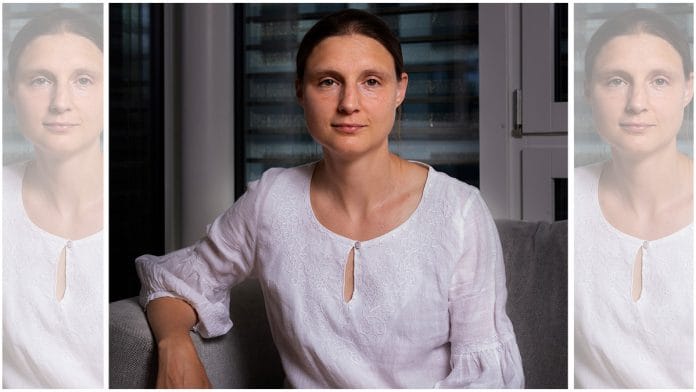New Delhi: In a probable universe with eight dimensions, how can eight identical spheres be arranged such that the arrangement is the densest possible (most stable)? Answering this question with mathematical proof has won a Ukrainian mathematician the Fields Medal, often described as the Nobel Prize for mathematics.
Ukrainian mathematician Maryna Viazovska (38), a professor at the Swiss Federal Institute of Technology in Switzerland’s Lausanne, is among the four mathematicians to receive the prize in 2022. She is only the second woman to have received the Fields Medal after Stanford mathematician Maryam Mirzakhani.
Bestowed once every four years on up to four mathematicians under the age of 40, the Fields Medal seeks to recognise outstanding mathematical achievement for existing work and the promise of future achievement. The medals, accompanied by cash prizes, are funded through a trust established by Canadian mathematician J.C. Fields at the University of Toronto.
Other winners of this year’s Fields Medal are: Hugo Duminil-Copin, a professor at the Institut des Hautes Études Scientifiques in France, June Huh, a professor at Princeton University in the US, and James Maynard, a professor at Oxford University in the UK.
The prize includes a medal and a monetary award of 15,000 Canadian dollars (approx. Rs 9 lakh).
Also Read: No one thought I could make it: Ramanujan Prize winner Neena Gupta who solved Zariski problem
Pioneers of mathematics
Finding the densest way to pack identical spheres in a given dimension has been a long-standing problem in mathematics, also known as the contact number problem. Imagine a billiard ball hanging in mid-air, and 12 further billiard balls rolling around it.
As explained by Russian mathematician Andrei Okounkov: “A photo of a 3-dimensional object taken by our phone may seem to be a 2-dimensional representation of the original, but… As we capture, process, store, transmit, or display photos, real manipulations are happening with long list of numbers.”
It has been known for some time that hexagonal packing of circles is the densest packing in two dimensions. A simple way to visualise the problem of sphere packing in two dimensions is the pattern one would follow when trying to cut circular pieces from rolled dough.
American mathematician Thomas Hales, in 1998, gave computer-assisted proof that the face-centred cubic lattice packing gives the densest packing in three dimensions.
However, lattices in higher dimensions — for instance, in eight dimensions — can be more difficult to visualise and the densest packing in any other dimension wasn’t known until recently. It was only in 2016 that Maryna Viazovska proved that a symmetric packing structure, known as the E8 lattice, gave the densest packing in eight dimensions.
It is for this groundbreaking assessment, which is a variation of a conjecture by 17th-century German mathematician Johannes Kepler, that she has been awarded the Fields Medal.
Duminil-Copin, meanwhile, has been recognised for his work in transforming the mathematical theory of phase transitions in statistical physics. Phase transitions describe the behaviour of a complicated system at some critical parameter; one example of this is water freezing to ice when it falls below a temperature of zero degree.
June Huh is the first mathematician of Korean origin to receive the Fields Medal. His work is centred around a field of mathematics known as combinatorics. In simple terms, combinatorics is the art of counting things; for instance, the number of ways one can order a pack of cards.
Huh’s work combines the art of mathematically describing complicated geometry with combinatorics.
Oxford mathematician James Maynard was awarded for his contributions to analytic number theory that have advanced the understanding of the structure of prime numbers. Prime numbers are often referred to as the ‘atoms’ of numbers, since all numbers are products of prime numbers.
While mathematicians have known for decades that infinite prime numbers exist in our numerical system, identifying the bigger prime numbers is a problem that baffles mathematicians to this day.
(Edited by Amrtansh Arora)
Also Read: Riemann Hypothesis: 161-yr-old Math mystery Hyderabad physicist is waiting to prove he solved






